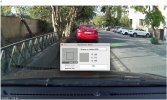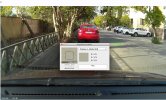Harsh
Well-Known Member
It does seem that what you are experiencing is much more subtle that my experience here. I would probably consider this to be of "minor concern as well".
It is not yet clear why there would such a pronounced difference but I'm sort of glad to see some form of conformation of the problem at any rate. If you keep testing time will tell if things get worse under different conditions, assuming you are still using the "A" setting.
So far, since first reporting it in February there has been no acknowledgment from Mobius that this issue even exists. There has been no mention to date of any new lens profile being added to the firmware.
From my perspective, as long as the CYAN color cast is as severe and persistent as it is, (for me) there is a problem that requires addressing that will probably be of concern to dash cam users as well as FPV enthusiasts.
I certainly hope that the Mobius team works on these issues and adds the dedicated lens profiles. Seems the appropriate way to go about things as the new lenses are coming from them (not a 3rd party hack job looking for adjustments).
I'll leave it on the A lens setting for a few weeks. Will post if anything worthy of mention pops up.



